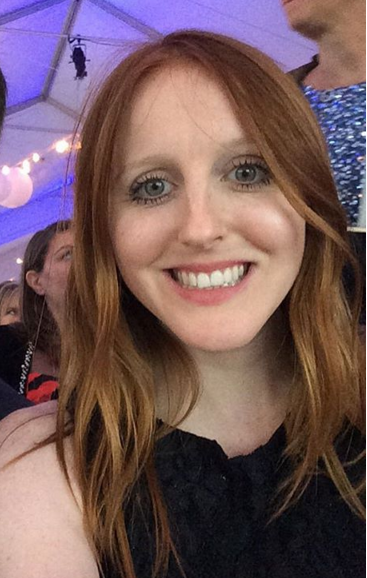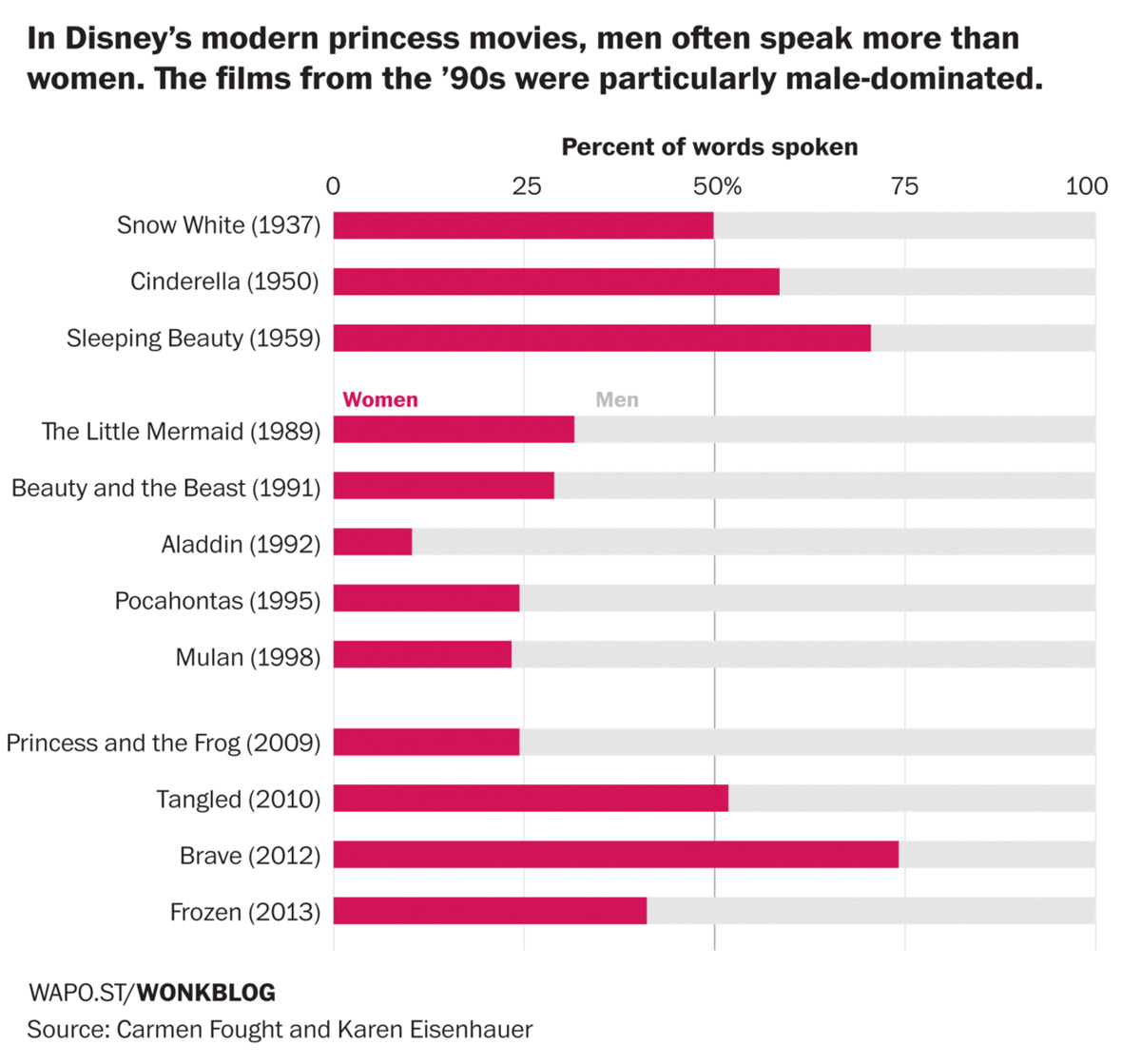The One Thing You Probably Didn’t Notice About Disney Princess Movies

By:
In the five Disney princess films that were released after "The Little Mermaid," male characters have three times as many lines as female ones, according to linguists Carmen Fought and Karen Eisenhauer.
Fought and Eisenhauer discovered this while working on a project that analyzes dialogue in Disney princess movies, according to The Washington Post. Though they are only in the preliminary stages of their research, they have already found some interesting patterns in the speaking habits of characters in Disney princess movies. In "Snow White," which was released in the 1930s, women and men have about the same number of lines. Women speak 60 percent of the time in "Cinderella," which was released in 1950, and women spoke 71 percent of the time in "Sleeping Beauty" in 1959.
The "Renaissance" era for Disney
But things started to change during Disney's "Renaissance" era, which lasted from 1989 to 1999. In 1989 hit "The Little Mermaid," male characters speak 68 percent of the time, and men speak 71 percent of the time in 1991 Academy Award-winning film, "Beauty and the Beast." In "Aladdin," men speak 90 percent of the time, and men talk 76 percent of the time in “Pocahontas” and 77 percent of the time in “Mulan.”
Twelve years later, Disney changed the game again with the film "Tangled," in which women have more than half of the lines spoken. "Brave" devotes nearly 75 percent of lines to women, but 2013 smash hit "Frozen" gives men nearly 60 percent of the lines despite the plot surrounding two sisters.
 Image: Wonkblog/Washington Post
Image: Wonkblog/Washington Post
There's a lack of small female bit parts in Disney princess films.
Fought said part of the issue is the fact that many of the characters in Renaissance era Disney princess films are male. With the exception of the heroine, there aren't many other females around to lend their support or friendship.
In "Beauty and the Beast," for example, main character Belle's closest companion is her father, and this only changes when she meets and ultimately falls in love with the Beast. In order to serve her country, Mulan poses as a man in the film "Mulan," so all of the people around her are male. Funny sidekicks in these films also tend to be male: Sebastian in "The Little Mermaid," Genie in "Aladdin," and Lumiere in "Beauty and the Beast," to name a few.
“There's one isolated princess trying to get someone to marry her, but there are no women doing any other things,” Fought said. “There are no women leading the townspeople to go against the Beast, no women bonding in the tavern together singing drinking songs, women giving each other directions, or women inventing things. Everybody who’s doing anything else, other than finding a husband in the movie, pretty much, is a male.”
Eisenhauer told The Post that she suspects "carelessness" in story creation is also at fault for the lack of female speaking parts in these films.
"My best guess is that it's carelessness, because we're so trained to think that male is the norm,” she said. “So when you want to add a shopkeeper, that shopkeeper is a man. Or you add a guard, that guard is a man. I think that's just really ingrained in our culture.”
The Disney princess backlash
Some of the Renaissance era Disney movies have also been widely criticized in recent years for their depictions of women. "The Little Mermaid" is frequently labeled as sexist because it involves a teenage girl disobeying her family and giving up her voice in order for a man to fall in love with her.
"The moral of the story lies here: change who you are -- not simply to be loved, but also to be accepted by others," Huffington Post writer Hilary Sheinbaum wrote in 2012. "Additionally, it portrays men as physically judgmental, only caring about the way a woman looks, bats her eyes and smiles -- that they do not consider any thoughts, feelings or concerns in one's pretty little head."
"Beauty and the Beast" has also faced backlash from people who argue it encourages unhealthy relationships. In the film, main character Belle is kidnapped by the Beast, who holds her captive in his castle. They eventually fall in love and become a couple, and many have expressed concern that this sends a bad message to young girls about how to conduct romantic relationships.
"Belle’s inferiority as a character and as a woman is amplified by her body language, which subtly suggests subservience and debility," Jeremy Chow wrote in a 2013 paper for Claremont Graduate University. "In observation and awakening of these contemptuous underpinnings, viewers may reflect upon the true merit of Disney films: what are women’s roles in relationships? What does it mean to be a princess? What does it mean to be truly male? What types of relationships are sanctioned? Perhaps, in understanding of these considerable injustices, Disney should seek to overturn these negative stereotypes given their prevalence, rather than glamorize such caricatures."
